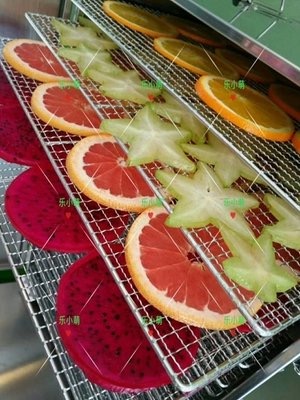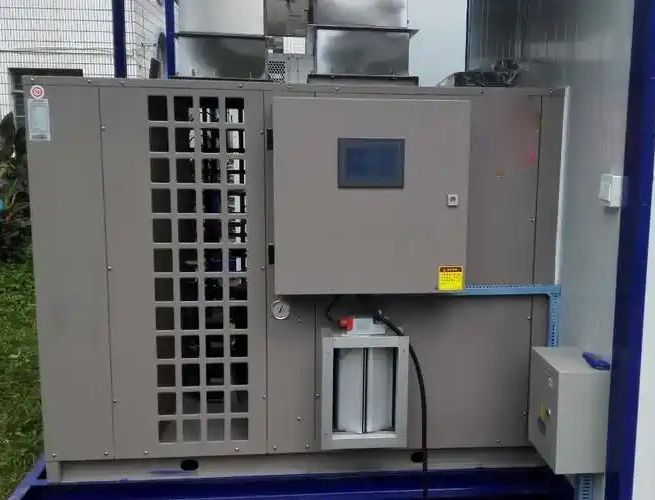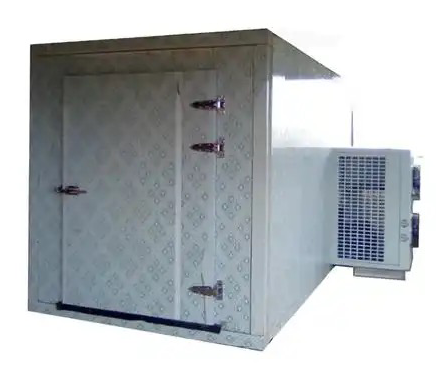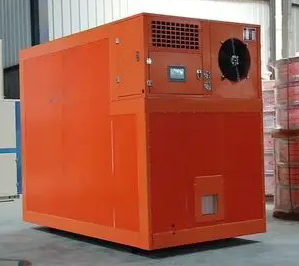
Content Menu
● Introduction
● What is a Food Dehydrator?
>> Types of Food Dehydrators
>> Benefits of Using a Food Dehydrator
>> How Food Dehydrators Work
>> Common Uses for Food Dehydrators
● Comparing Food Dehydrators with Other Drying Methods
>> Why Choose a Food Dehydrator?
● Tips for Successful Food Drying
● OEM Services for Food Dehydrators
● Conclusion
● Related Questions
>> 1. What foods can I dehydrate using a food dehydrator?
>> 2. How long does it take to dehydrate fruits?
>> 3. Do I need to pre-treat fruits before dehydrating?
>> 4. Can I use my oven instead of a dehydrator?
>> 5. How should I store dried foods?
Introduction
Food dehydrators are essential appliances for anyone looking to preserve food, enhance flavors, and create healthy snacks. Unlike traditional drying methods, food dehydrators provide a controlled environment that ensures even drying, preserving the nutritional value of food. This article will explore the various aspects of food dehydrators, including their benefits, types, and how they compare to other drying methods. We will also provide insights into the OEM services offered by our factory for international brands and wholesalers.

What is a Food Dehydrator?
A food dehydrator is an appliance designed to remove moisture from food items through the application of heat and airflow. By reducing moisture content, dehydrators inhibit the growth of bacteria, yeast, and mold, allowing food to be stored for extended periods without refrigeration.
Types of Food Dehydrators
1. Tray Dehydrators: These are the most common type of food dehydrators. They consist of multiple trays stacked on top of each other where food is placed. Heat is applied from a central fan that circulates air evenly across all trays.
2. Shelf Dehydrators: Similar to tray dehydrators but often larger and more industrial in nature. They are suitable for commercial applications and can handle larger quantities of food.
3. Excalibur Dehydrators: A popular brand known for its high-quality models that offer adjustable temperature settings and timer functions.
4. Hybrid Dehydrators: These combine different drying technologies, such as convection and microwave drying, to speed up the process while maintaining quality.
5. Commercial Dehydrators: Designed for large-scale operations, these units often come with advanced features such as programmable controls, larger capacities, and enhanced airflow systems.
Benefits of Using a Food Dehydrator
- Nutritional Preservation: Dehydrating food helps retain vitamins and minerals that can be lost during cooking. For example, vitamin C in fruits is preserved better when dried at lower temperatures compared to boiling or frying.
- Flavor Enhancement: Concentrating flavors through dehydration can create delicious snacks like fruit leathers and jerky. The drying process intensifies the natural sweetness of fruits and the savory flavors of meats.
- Cost-Effective: Buying in bulk and dehydrating seasonal fruits and vegetables can save money in the long run. For instance, purchasing ripe bananas at a lower price during peak season and dehydrating them allows you to enjoy banana chips year-round.
- Convenience: Dried foods are lightweight, portable, and have a long shelf life, making them ideal for camping or travel. They are also perfect for busy lifestyles where quick snacks are needed without compromising on health.
- Healthy Snacking: Homemade dried snacks are free from preservatives and added sugars found in store-bought options. You can control the ingredients used in your snacks, ensuring they are wholesome and nutritious.
How Food Dehydrators Work
Food dehydrators operate by using heat to evaporate moisture from food items. The process typically involves:
1. Preparation: Fruits, vegetables, or meats are washed, cut into uniform pieces, and sometimes blanched or marinated. Uniform cutting ensures even drying; thicker pieces may take longer to dry than thinner ones.
2. Placement: The prepared food is arranged on trays or shelves within the dehydrator. It's essential not to overcrowd the trays to allow proper air circulation.
3. Heating: The dehydrator is turned on, and heat is applied through heating elements while fans circulate air around the trays. Most models allow you to set specific temperatures based on what you are drying.
4. Monitoring: The drying process is monitored to ensure optimal results. Most dehydrators come with adjustable temperature settings suited for different types of food.
5. Storage: Once dried to the desired texture, foods should be stored in airtight containers to prevent moisture reabsorption. Glass jars or vacuum-sealed bags work well for long-term storage.

Common Uses for Food Dehydrators
Food dehydrators can be used for a variety of applications beyond just making snacks:
- Making Jerky: One of the most popular uses for dehydrators is making beef jerky or turkey jerky at home. You can control the marinade ingredients and ensure no preservatives are used.
- Fruit Leathers: Pureed fruits can be spread onto trays to create healthy fruit leathers—an excellent alternative to sugary candies.
- Herb Drying: Fresh herbs can be dried quickly in a dehydrator, preserving their flavor for use in cooking throughout the year.
- Vegetable Chips: Vegetables like kale, zucchini, or sweet potatoes can be sliced thinly and dried into crispy chips—a healthy alternative to potato chips.
- Powdered Ingredients: Dried vegetables or fruits can be ground into powders for use in soups, smoothies, or as seasoning agents.
Comparing Food Dehydrators with Other Drying Methods
When considering how food dehydrators stack up against other drying methods like sun drying or oven drying, several factors come into play:
| Feature | Food Dehydrator | Sun Drying | Oven Drying |
|-------------------------|--------------------------|---------------------------|---------------------------|
| Control Over Temperature | High | Low | Moderate |
| Time Efficiency | Moderate | Slow | Fast |
| Nutritional Retention | High | Moderate | Low |
| Space Requirement | Compact | Requires outdoor space | Requires oven space |
| Consistency | High | Variable | Moderate |
Why Choose a Food Dehydrator?
Food dehydrators provide a controlled environment that ensures consistent results compared to sun drying or oven drying methods. For instance, sun drying can lead to uneven moisture removal due to fluctuating weather conditions; humidity can hinder the process entirely if conditions are not optimal. Oven drying may cook the food rather than dry it if not monitored closely.
Tips for Successful Food Drying
To maximize your success with a food dehydrator:
1. Choose Quality Ingredients: Always start with fresh produce; overripe or damaged items will not yield good results.
2. Uniform Sizing: Cut foods into uniform sizes to ensure even drying times; this applies especially to fruits and vegetables.
3. Temperature Settings: Use appropriate temperature settings based on what you're dehydrating—fruits typically require lower temperatures than meats.
4. Rotate Trays: If using a tray-style dehydrator, rotate trays periodically during the drying process for even results.
5. Test for Doneness: Check foods regularly towards the end of the drying time; they should be dry but still pliable (not brittle).
6. Cool Before Storing: Allow dried foods to cool completely before sealing them in containers; this prevents condensation inside storage containers which could lead to spoilage.
OEM Services for Food Dehydrators
As a leading manufacturer of food dehydrators in China, we specialize in providing OEM services tailored to meet the needs of international brands and wholesalers. Our services include:
- Custom Design: Collaborating with clients to create unique designs that align with their brand identity while ensuring functionality meets consumer needs.
- Quality Assurance: Implementing strict quality control measures throughout the production process to ensure every unit meets industry standards and customer expectations.
- Flexible Production Capacity: Our factory is equipped to handle both small batch orders and large-scale production runs efficiently without compromising quality.
- Technical Support: Offering ongoing support for our clients in terms of product development and troubleshooting post-production issues that may arise during product launches.
- Market Research Insights: Providing clients with insights into market trends that could influence product design or features based on consumer preferences.
Conclusion
Food dehydrators are invaluable tools for preserving food while enhancing flavors and nutritional value. With various types available on the market, consumers can choose models that best fit their needs—whether for home use or commercial applications. Our factory's OEM services allow brands worldwide to offer high-quality dehydrators tailored to their specifications while ensuring they meet market demands effectively.
By understanding how these appliances work and their advantages over traditional drying methods, consumers can make informed decisions about incorporating them into their kitchens as part of a healthier lifestyle choice focused on nutrition preservation without sacrificing flavor or convenience.

Related Questions
1. What foods can I dehydrate using a food dehydrator?
You can dehydrate fruits (like apples and bananas), vegetables (such as carrots and bell peppers), herbs (like basil and parsley), meats (for jerky), fish (like salmon), and even flowers for potpourri or decorative purposes.
2. How long does it take to dehydrate fruits?
The time varies depending on the fruit type but generally ranges from 6 to 12 hours at temperatures between 125°F to 135°F (52°C to 57°C). Thinner slices will dry faster than thicker ones; always check periodically towards the end of the cycle.
3. Do I need to pre-treat fruits before dehydrating?
Pre-treating fruits with lemon juice or ascorbic acid can help maintain color and flavor but is not always necessary; some fruits like apples benefit from dipping in lemon juice before dehydration as it prevents browning.
4. Can I use my oven instead of a dehydrator?
Yes, you can use an oven set at low temperatures (around 150°F or 65°C); however, it may not provide as consistent results as a dedicated dehydrator since ovens lack proper airflow systems designed specifically for dehydration processes.
5. How should I store dried foods?
Dried foods should be stored in airtight containers made from glass or vacuum-sealed bags placed in cool dark places away from direct sunlight; this helps maximize shelf life significantly compared with regular storage methods used for fresh produce.












